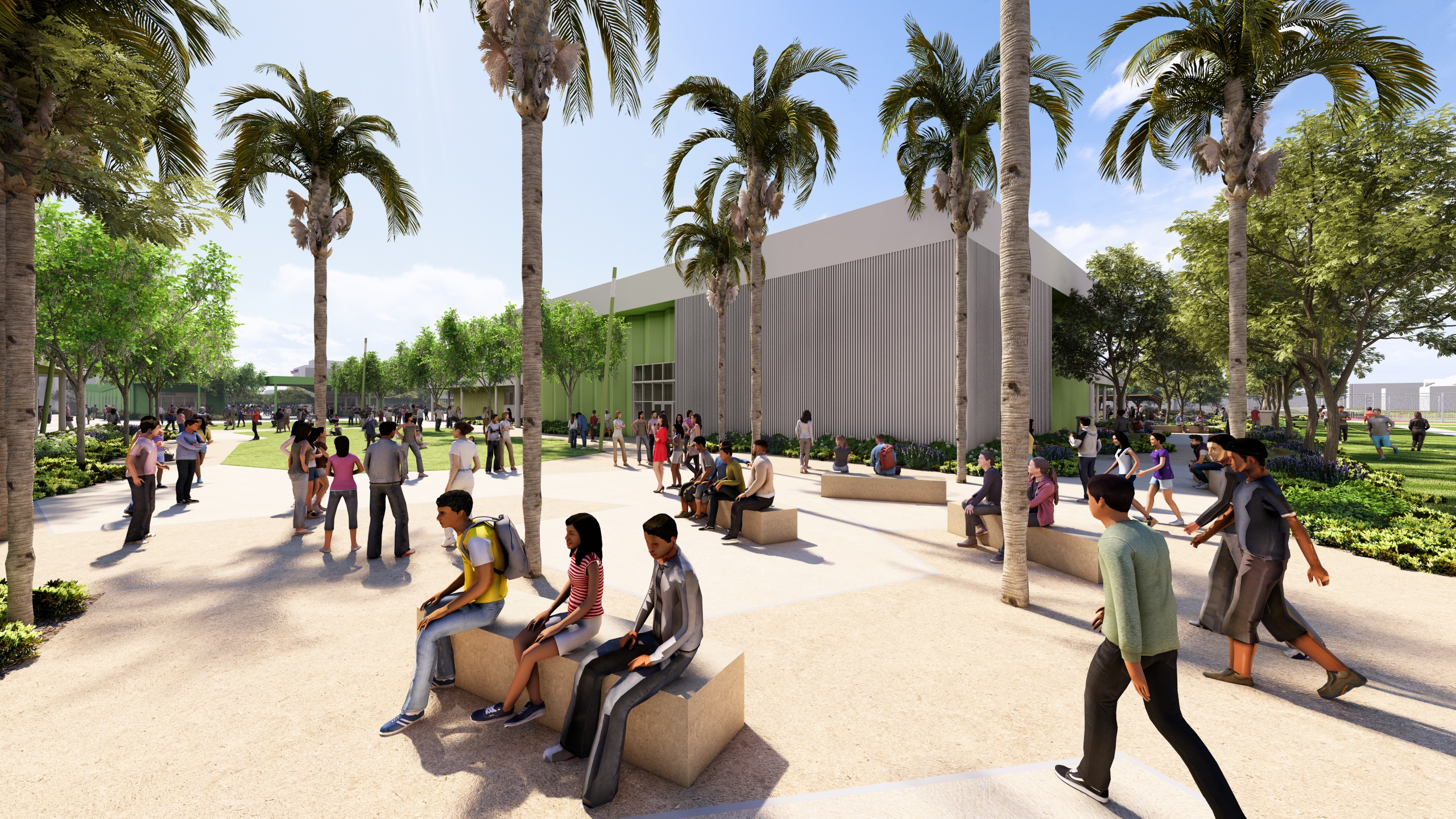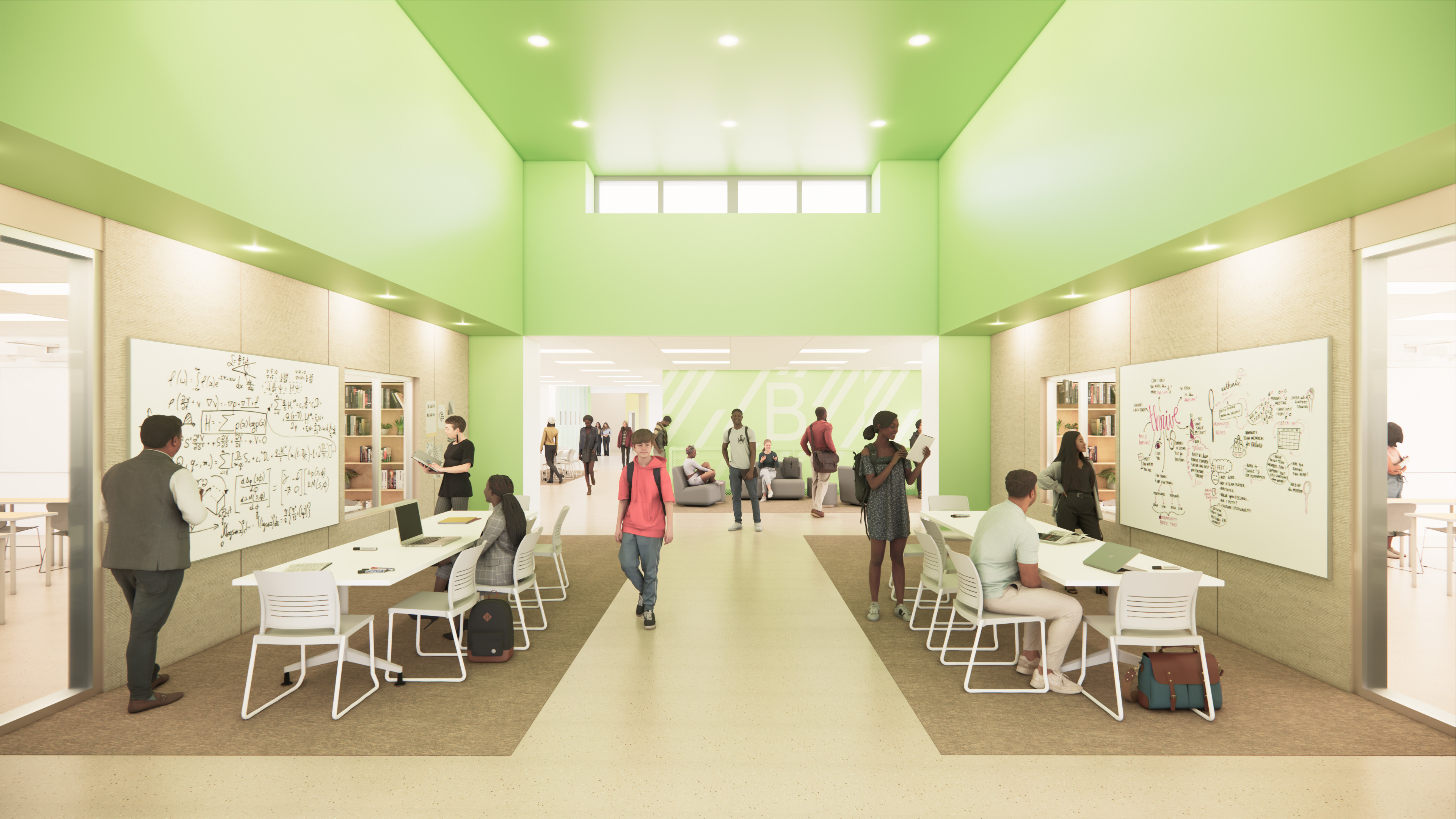


As conversations about the future of education continue, many are observing shifting roles of the physical campus. The World Economic Forum’s 2023 Future of Jobs report projects that the fastest-growing skills over the next five years will center on analytical thinking, creativity, and adaptability. With online learning expanding, physical schools continue to offer students and communities increased collaboration, hands-on learning, and relationship building that can’t be replicated virtually.
Funded largely by Measure I, the $240 million transformation of Inglewood High School responds to these shifts with learning academies, collaboration corridors, and visible, active STEM and CTE spaces that prepare students for education and careers ahead.
By focusing on the whole student, the design becomes a central part of increasing enrollment, building lasting infrastructure, and expanding the role of a school.
Through facilitated focus groups with district leaders and community members, Inglewood High School’s design centered around the concept of “learning academies.” In many communities across California, like Inglewood, high school instruction is evolving to better replicate the experiences of higher education and the workplace.
“Inglewood High School’s design asked a question: How do we make a school not just the most effective learning center, but a place where students collaborate and actively engage to form social bonds that prepare them for life ahead?” — Greg Kochanowski, Practice Design Principal
Students need spaces that let them move more easily and more often between direct instruction, collaboration, and hands-on, project based learning. The learning academy model at Inglewood offers a structure that blends belonging with real-world readiness.
Shared, flexible spaces and collaboration corridors turn widened hallways into intentional learning zones. Recent changes to the California Building Code allow for a more relaxed interpretation of corridors in public schools, particularly for fire-resistance ratings, enabling the design of "collaboration corridors" and open learning spaces. For a potentially more interactive, flexible learning environment, these areas adjacent to classrooms are outfitted with soft flooring, writeable surfaces, and movable furniture.
Clusters of four to six classrooms arranged around a central collaboration area. Research on place-based learning communities shows they can strengthen social bonds and increase academic achievement by encouraging regular peer interaction and support. This layout creates a series of small learning communities within the larger campus that give students and teachers a home base for increased camaraderie and connection.
Noise-mitigated design that brings the outdoor experience inside, crucial for a campus located under the LAX flight path. These indoor zones recreate the open, social feel of outdoor learning spaces while allowing instruction to continue uninterrupted.
“Collaboration zones allow students to work with each other away from the typical classroom space, bringing down traditional barriers to instead allow for thoughtful discussion of core curriculum in a relaxed setting.” — Isa Mattia, AIA, Practice Project Architect

CTE centers and STEM labs are designed to bridge the gap between education and workforce development. These spaces prepare students for the careers of tomorrow by emphasizing the importance of skills-based learning.
Each learning academy links these specialized labs to general education classrooms. Studies show that active learning environments can reduce failure rates by one-third and improve performance compared to lecture-based instruction.
The new facilities are outfitted for hands-on, project-based instruction that helps students build tangible skills, from engineering experimentation to integrated technology.
By making these programs physically visible through the open collaboration zones and adjacent outdoor gallery space, students see their work showcased as part of the campus experience. The architecture elevates the importance of CTE and STEM programs, encouraging participation and instilling pride, while making learning a social experience.
As education and workforce needs change, adaptable design strategies ensure these spaces can evolve with future technologies and industries yet to emerge.
Through this historic $240 million investment, Inglewood High School reflects a growing emphasis on designing campuses that holistically support students’ academic and social needs. The new school design supports collaboration, skills-building, and adaptability as foundations of the student experience.
Watch how this comes to life in our video of Inglewood High School’s design.